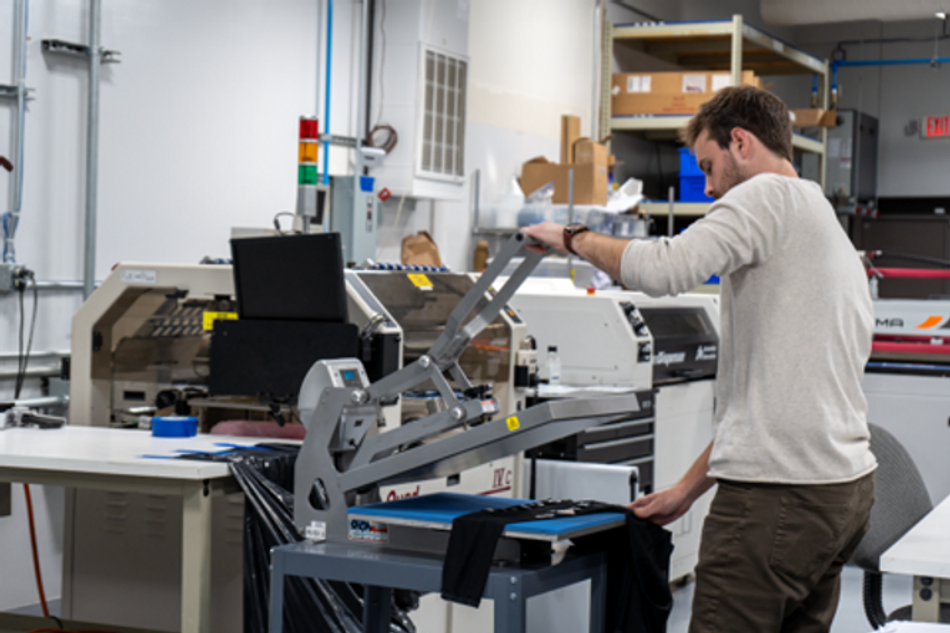How Printed Electronics Can Make Healthcare More Accessible
A washable wearable biometric device using printed electronics technology provides real-time data for telemedicine. Integrated into a sleeve, the sensors monitor muscle activity. The data, transmitted to an online platform, facilitates remote health monitoring.
As part of TechBlick series on additive and printed electronics, TechBlick invited Butler Technologies to share some insights how they leverage screen printed electronics on flexible substrates to enable textile-based truly wearable and washable biosensors. They even went the extra mile, providing a full solution with complete software suite [data capture processing and UX]. The article originally appeared here
How Printed Electronics Can Make Healthcare More Accessible
Authors: Michael Wagner, Chief Innovations Office at Butler Technologies & Courtney Houtz, Marketing Manager at Butler Technologies
From grocery shopping to doctor appointments, we can do just about anything online these days. Virtual appointments have become increasingly popular since the COVID-19 pandemic, but can doctors make accurate judgements based on a video chat?
Telemedicine and virtual doctors’ appointments have long relied on subjective feelings from the patient rather than actual data. Printed electronics are the solution to provide doctors with accurate data to monitor in real time.
Printed electronics are typically circuitry printed onto flexible substrates, including PET, PC, and TPU using conductive inks or materials. Printed electronics is an all-encompassing phrase for any electronic that is printed. Traditional examples of printed electronics include membrane switches and printed circuit boards, but this technology is ever evolving. New and innovative ways to use conductive inks are being discovered every day. Conductive materials can create flexible printed heaters that can be easily incorporated into clothing items like socks or gloves. Biometric sensors, which send or receive electricals, can also be printed with conductive inks. This new type of printed electronics has countless applications in the medical field.
Butler Technologies is at the forefront of this advanced printed technology. Last year, we partnered with Loft LLC, a software design firm, to build a functional biometric wearable. The wearable sleeve was designed with printed biometric sensors and measured muscle activity in the arm. Butler Technologies manufactured the printed sensors whereas Loft designed a web platform to track and display the data gathered by the biometric sensors. By combining hardware and software design, doctors and physical therapists can rely on actual objective data for at-home health monitoring rather than subjective data.
Printed biometric sensors for telemedicine

Book your place now: Free-to-attend Innovations Festival on Printed Flexible Wearable Electronics. 65 talks, 50+ exhibitors, and 1200 registrations - see here
Biometric sensors are used to track muscle activity, heart rate, breath rate, brain activity, and more. A biometric sensor can send or receive electrical signals through contact with skin.
Printed biometric sensors are dry electrodes. They can be easily adhered to clothing garments or medical braces without the need for messy gels or annoying wires. Traditional biometric sensors are cumbersome with messy gels or complicated wires to collect accurate data, which is not helpful when the doctor or nurse aren’t in the room with the patient. Printed biometric sensors are the best solution for telemedicine visits because they can be adhered to garments that the patient is already familiar with, like a standard brace or compression shirt. These printed sensors can also be washed like a normal garment whereas traditional sensors tend to be single use.
The data collected by the sensor can then be transmitted to an app or website via WiFi or Bluetooth connection. This gives the doctor or physical therapist objective data in real time despite their patient being at home. The doctor can also review the data him/herself instead of relying on the patient to communicate the data over the phone.
Bridging the gap between hardware and software
Butler Technologies uses conductive inks to screen print biometric sensors onto flexible TPU substrates. The biometric sensors that Butler Technologies manufactures are just one part of the wearable puzzle. Without someplace to send the data, the sensors are moot.

Loft helped finish the puzzle by working on the software side. The Butler Technologies team sent Loft sample biometric sensors to confirm they could easily read the signal from the sensors. Loft used WiFi to transmit the signal from the sensor to a webpage that displayed the data.
Once it was confirmed that the biometric sensors were working properly, Butler Technologies purchased off-the-shelf compression sleeves and shirts that would become the final wearable product. Biometric sensors made with stretchable conductive inks are designed to stretch and flex with the body. At Butler Technologies, we typically print biometric sensors on a flexible thermoplastic polyurethane (TPU) substrate and then adhere to the garment with a hot melt adhesive through a common heat transfer process.
However, the off-the-shelf products quickly proved challenging as the sensors were hard to apply in a shirt that was fully stitched. Butler Technologies’ team of engineers had to use a mannequin and find a way to curve the sensor within the shirt so that it would still collect the correct muscle activity.
In order for the sensor to collect proper data, three sensors were adhered to the sleeve of the compression shirt. Two electrodes ran parallel to the bicep muscle and one sensor acted as the reference electrode. One active electrode was placed on the middle of the bicep muscle and the other on the end of the bicep muscle. The reference sensor was placed on the forearm. This sensor picks up ambient electrical activity in the body to make it easier to clean up noise in the data. Loft’s computer program could then pinpoint what signals were the bicep muscles firing and what a resting signal looked like.

Connect with the printed flexible wearable electronics community in Berlin and learn the latest - explore programme here https://www.techblick.com/electronicsreshaped
Why printed electronics are the right solution
Traditional wires hinder movement, accessibility, and usability. They are bulky and uncomfortable for prolonged use. Printed biometric sensors are comfortable, conformable, and stretchable. They are lightweight, so the wearer would not notice the sensors were embedded in the shirt.
From idea to finished product, the finished wearable device was completed in six weeks. Printed electronics can make remote healthcare more accessible and reliable. A patient does not need to visit a doctor’s office in order to detect health concerns. Physical therapists and doctors can track how well a muscle is recovering after surgery or injury with printed biometric sensors. They can also track if their patient is completing exercises and exerting the right muscles.
Biometric sensors have many other applications outside of the healthcare field. They can be embedded into outdoor or exercise apparel so consumers can track their own vitals. The possibilities with printed electronics are endless.
